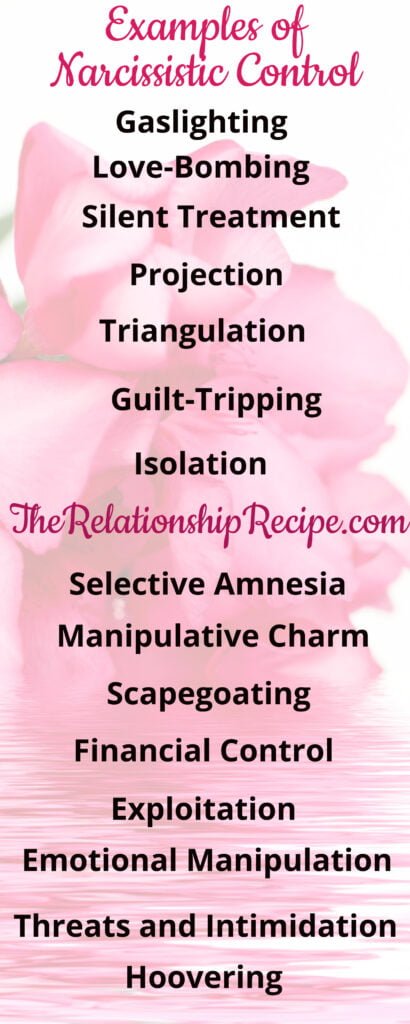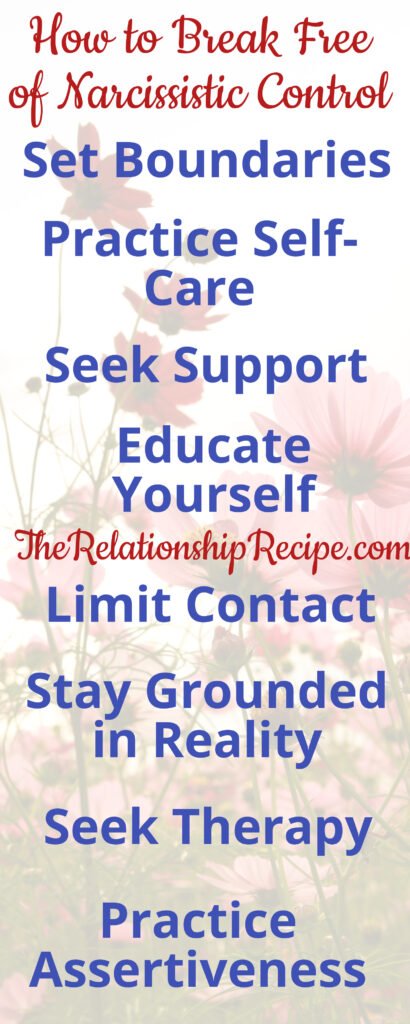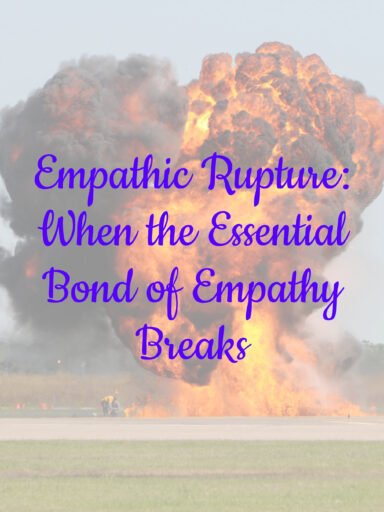Introduction
Navigating relationships can be complex, especially when dealing with individuals who possess narcissistic tendencies, as found in Dark Triad personality disorders.
These people often employ various tactics to maintain control and manipulate those around them. Many of us may be totally unaware that we are being controlled until we are deep in a relationship — narcs are that good at what they do!

In fact, they live for it.
All the world’s a stage, when you’re a narc, and we are just supporting actors.
Recognizing these tactics is important for preserving one’s well-being and autonomy.
In this article, we’ll talk about 15 common, yet sneaky tactics narcissists use to control others, provide real-life examples, and offer practical strategies for breaking free from their grip.
Narcisstic Control Video
For the condensed version, of this article, watch the video:
The Psychological Impact of Narcissistic Control
The psychological impact of narcissistic control can be profound and long-lasting, leaving victims grappling with a range of emotions and struggles. One of the most significant impacts is on the victim’s self-esteem and sense of self-worth. Constant manipulation, gaslighting, and criticism from the narcissist can chip away at one’s confidence, leaving them feeling worthless and questioning their own abilities and judgment.
Furthermore, narcissistic control often leads to feelings of powerlessness and helplessness. Victims may feel trapped in a cycle of manipulation, unable to break free from the narcissist’s influence. This sense of powerlessness can extend to other areas of their life, affecting their ability to make decisions, set boundaries, and advocate for themselves.

Additionally, narcissistic control can have detrimental effects on the victim’s mental health. Constant emotional manipulation and abuse can lead to anxiety, depression, and even post-traumatic stress disorder (PTSD). Victims may experience intense feelings of fear, shame, and guilt, further exacerbating their psychological distress.
Moreover, narcissistic control can damage interpersonal relationships and social connections. Victims may become isolated from friends and family members as the narcissist works to control and manipulate their interactions. This isolation can further perpetuate the victim’s sense of powerlessness and exacerbate feelings of loneliness and despair.
Overall, the psychological impact of narcissistic control is profound and multifaceted, impacting every aspect of the victim’s life. Breaking free from the grip of a narcissist requires courage, support, and resilience, but with time and healing, victims can reclaim their sense of self-worth, autonomy, and well-being.

15 Examples of Narcissistic Control
- Gaslighting:
Gaslighting is a manipulative tactic aimed at making the victim doubt their own perceptions, memories, and sanity. For instance, a narcissistic partner might deny previous conversations or events, leaving the victim questioning their own reality. - Love-Bombing:
Love-bombing involves excessive displays of affection, praise, and attention to overwhelm the target and establish a deep emotional connection. An example is when a narcissistic friend showers compliments and gifts on someone they wish to control, creating a sense of indebtedness and dependency. - Silent Treatment:
By withholding communication and affection, narcissists use the silent treatment to punish and manipulate their targets. For instance, a narcissistic boss might ignore an employee’s contributions after a disagreement, leaving them feeling isolated and insecure. - Projection:
Narcissists project their flaws onto others to avoid facing their own shortcomings. For example, a narcissistic colleague might accuse their coworker of being untrustworthy when they are the ones who lack integrity. - Triangulation:
Triangulation involves bringing a third party into a relationship or situation to create jealousy, insecurity, or competition. A narcissistic parent might favor one sibling over another, creating resentment and rivalry within the family dynamic. - Guilt-Tripping:
Narcissists manipulate by using guilt as a tool to make others comply with their demands. For instance, a narcissistic friend might guilt-trip their peer into spending time with them by claiming they feel neglected and unloved. - Isolation:
By cutting off their target from external support systems, narcissists maintain control over their lives. For example, a narcissistic partner might discourage their significant other from spending time with friends and family, leaving them dependent solely on the narcissist for validation and companionship.

- Selective Amnesia:
Narcissists conveniently forget promises, agreements, or past behavior to avoid accountability. For instance, a narcissistic coworker might conveniently forget their role in a failed project and blame others for the outcome. - Manipulative Charm:
Narcissists often possess charismatic personalities that they use to charm and manipulate others. For example, a narcissistic leader might use their charm to rally support for their agenda, despite its potential harm to others. - Scapegoating:
Narcissists designate a scapegoat onto whom they deflect blame and responsibility for their own mistakes and shortcomings. An example is when a narcissistic family member blames their troubles on a specific relative, creating tension and division within the family. - Financial Control:
By controlling finances, narcissists limit their target’s independence and ability to make decisions. For instance, a narcissistic spouse might control all financial resources, leaving their partner financially vulnerable and reliant on them. - Exploitation:
Narcissists exploit others for personal gain, often without regard for their well-being. For example, a narcissistic coworker might take credit for a colleague’s ideas or work to advance their own career at the expense of others. - Emotional Manipulation:
Narcissists use emotions as weapons to manipulate and control their targets. For instance, a narcissistic parent might feign sadness or disappointment to guilt-trip their child into compliance. - Threats and Intimidation:
Narcissists use threats and intimidation to instill fear and maintain dominance over their targets. For example, a narcissistic partner might threaten to leave or harm themselves if their demands are not met, coercing their significant other into submission. - Hoovering:
Hoovering is the narcissistic tactic of reeling a target back into a relationship or dynamic after a period of absence or discard. For instance, a narcissistic ex-partner might shower their former lover with affection and promises of change to regain control and manipulate them once again.

How to Break Free of Narcissistic Control
Now that we’ve explored these tactics, it’s essential to discuss strategies for breaking free from narcissistic control:
- Set Boundaries: Establish clear boundaries and stick to them, regardless of the narcissist’s attempts to push them.
- Practice Self-Care: Prioritize self-care activities that nurture your physical, emotional, and mental well-being.
- Seek Support: Reach out to trusted friends, family members, or mental health professionals for support and guidance.
- Educate Yourself: Learn about narcissism and manipulation tactics to better recognize and respond to them.
- Limit Contact: Minimize contact with the narcissist whenever possible to reduce their influence over your life.
- Stay Grounded in Reality: Trust your instincts and perceptions, and don’t let the narcissist’s gaslighting tactics make you doubt yourself.
- Seek Therapy: Consider therapy or counseling to process your experiences, heal from emotional wounds, and develop coping strategies.
- Practice Assertiveness: Assert your needs, wants, and boundaries confidently and assertively, without succumbing to guilt or manipulation.

Healing From Narcissistic Control
Healing from narcissistic control is a challenging journey that requires patience, self-compassion, and support. One of the first steps in the healing process is acknowledging and validating the pain and trauma caused by the narcissistic relationship. This involves allowing oneself to feel the range of emotions that may arise, such as anger, sadness, and grief. By recognizing and accepting these emotions, individuals can begin to release the hold that the narcissist has had on their psyche.
Next, it’s essential to prioritize self-care and self-love. Engaging in activities that bring joy, relaxation, and fulfillment can help rebuild a sense of self-worth and resilience. This may include hobbies, exercise, meditation, or spending time with supportive friends and family members who uplift and validate one’s experiences.

Seeking professional support through therapy or counseling can also be instrumental in the healing process. A therapist can provide a safe space to process emotions, explore patterns of behavior, and develop coping strategies for dealing with triggers and flashbacks. Cognitive-behavioral therapy (CBT) and trauma-informed approaches can be particularly effective in addressing the psychological scars left by narcissistic abuse.
Additionally, setting boundaries and practicing assertiveness are needed components of healing from narcissistic control. Learning to assert one’s needs, wants, and boundaries with confidence and clarity can help rebuild a sense of agency and empowerment. It’s essential to surround oneself with supportive individuals who respect and honor these boundaries, cultivating a sense of safety and trust in relationships.
Finally, forgiveness—both of oneself and of the narcissist—is an integral part of the healing journey. Forgiveness does not mean excusing or condoning the narcissist’s behavior but rather releasing the anger and resentment that may be holding one back from fully embracing the present moment.
Ultimately, healing from narcissistic control is a process of reclaiming one’s power, rebuilding a sense of self-worth, and cultivating a life filled with love, authenticity, and freedom.

Before You Go…
If you are looking for more in depth guidance on narcisstic control, this book comes highly reccommended: Recovery from Narcissistic Abuse, Gaslighting, Codependency and Complex PTSD (4 Books in 1)
This comprehensive guide offers a holistic approach to understanding and healing from narcissistic abuse, gaslighting, codependency, and complex PTSD.
Through four distinct books, readers learn to identify manipulation tactics, recognize unhealthy relationship dynamics, and develop strategies for recovery. Each book provides practical exercises, real-world scenarios, and valuable insights to empower individuals to break free from toxic patterns and cultivate healthier relationships.
Whether it’s learning about different types of narcissists or understanding the complexities of PTSD, this therapist-recommended resource equips readers with the tools and knowledge needed to embark on a journey of healing and self-discovery.
Recognizing the problem is the first step, and this guide offers a roadmap for taking action and reclaiming one’s life.

Wrapping Up
Navigating relationships with narcissistic individuals can be challenging, but by recognizing their control tactics and implementing strategies to break free, you can reclaim your autonomy and well-being. Remember, you deserve to be treated with respect, kindness, and dignity in all your relationships.
https://thriveworks.com/blog/how-narcissists-control-you/
This post may contain affiliate links. I earn from qualifying Amazon purchases at no extra cost to you.




